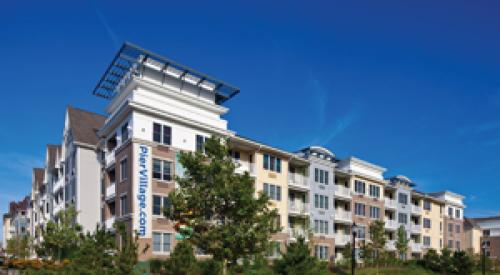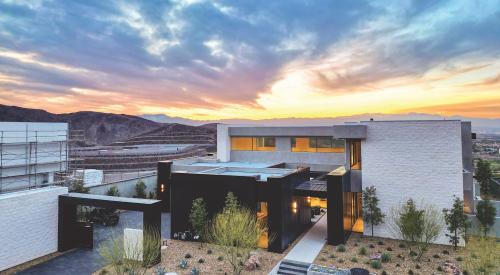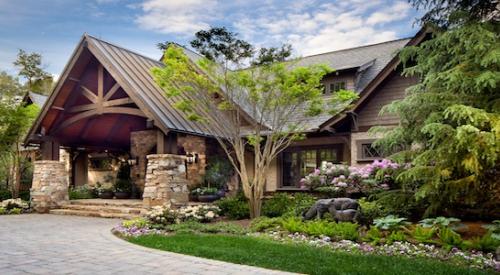Interior Surfaces
Walls, floors and the ceiling are dark in color. The floor is carpeted. Drapes sometimes are hung to reduce sound reflection. Fabric-covered acoustic panels often are used in the key reflective points on walls and the ceiling to focus sound on the seating area. "You want the room to soften sound," says David Heim, president of Quest Home Entertainment. "Not dead, but no reflective surfaces like glass or wood."
Seating
Seating often is tiered. Some Dallas homes have theater-style seats, but leather or fabric-covered couches are more common. Ceiling height is not a huge variable, but you need enough height to do three tiers of seating at 8 inches per step.
Projector
| InFocus LS-7200 high-definition DLP projector |
Usually ceiling-mounted at the back of the room, the projector is aimed between the middle and top of the screen. Projection systems using the new digital light processor (DLP) chip from Texas Instruments maximize screen size. "When you hit $10,000 in a DLP system, you have to spend a lot more to get a noticeable edge in performance," says Kenny Kehoe of Stereo East.
Heim says, "With the price of projectors now, I'd use a DLP system even in a $15,000 room. You get much more than plasmas or rear projection can deliver."
Screen
| Stewart Filmscreen |
The screen should be 30 inches off the floor and, in Texas, measure at least 100 inches, diagonally, in a 16x9 aspect ratio. "Everything has to be big in Texas," says Sound Image owner Tony Militello. "Projection systems maximize screen size." The projector and screen often make up half the bill in a $30,000 system.
Structural Components
To replicate a commercial theater, the room must be free of sound transmission to other rooms, acoustically independent. This requires steps such as double-framing walls and floor, or spraying in foam insulation to create a sound barrier between studs and drywall. In Dallas production-built houses, it doesn't happen. "You can spend $2,000 on wall insulation and help a little," Kehoe says. "But the next step is $25,000. When the space is over the garage, it's not a big problem. How likely is it that someone will be trying to sleep elsewhere in the house while the theater is in use?"
Lighting
Wall sconces are standard. Recessed lighting around the room's perimeter and seating area allows greater lighting control. Task lighting on the control panel and equipment rack is a must.
Controls
| Crestron automation and control system |
Receiver, amplifier, DVD player, surround-sound processor, high-definition satellite controls, video game units ... there's always a big rack of equipment in any home theater. In the best ones, that equipment slides into the back wall, flush. Remote-control systems must be simple to operate without extensive training.
Speakers and Amplification
| Triad InWall Silver 6 speaker |
Free-standing speakers deliver the best performance, but many model homes use speakers concealed in the ceiling and walls.
Surround-sound systems come in 5.1 and 7.1 configurations. The 5.1 has three front speakers, two in back and one subwoofer. The 7.1 adds two speakers on the side walls. The center channel can be up to 3 feet wide, underneath the screen, but not visible from the seating area. Subwoofers produce the lowest frequencies, which are the longest wavelength. That can create "dead spots." Extra subwoofers sometimes are used to eliminate the problem. Speaker packages range from $2,000 for a 5.1 surround-sound system to $7,000 and up for a 7.1.










